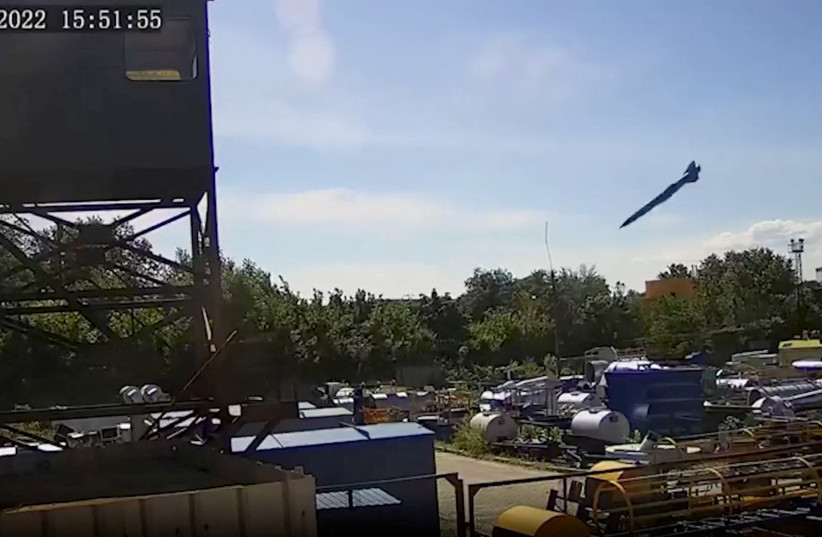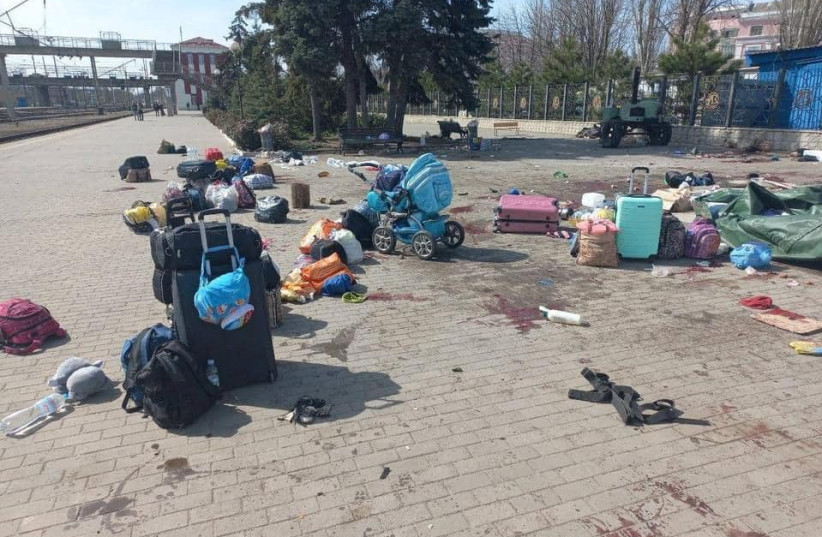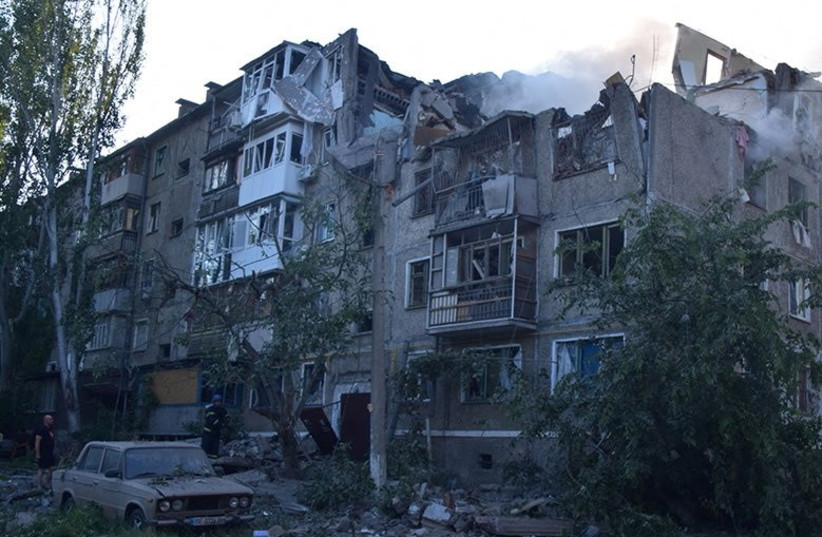Russia's recent missile strike on the crowded shopping center in the city of Kremenchuk, Ukraine on Monday may very well have actually been an attempt at hitting a military infrastructure target, according to the latest UK defense intelligence update Wednesday morning as the invasion stretches into its 126th day.
The attack on the Kremenchuk shopping center in the Poltava Oblast in central Ukraine on June 27 resulted in numerous civilian casualties, with many people still missing.
At the time, Ukrainian President Volodymyr Zelensky stressed that the mall had no strategic value whatsoever and many figures in the international community criticized the deaths of civilians.
However, Russia's Defense Ministry said that they had struck a facility that stored Western-made weapons and ammunition that were being sent to Ukrainian fighters in the Donbas. This ammunition depot exploded, sparking a fire that spread to the shopping center, Russia said at the time.
In addition, Russia has maintained throughout the war – which they refer to as a "special military operation" – that they have only attacked military targets and have never launched strikes against civilians, despite the numerous reports of civilian casualties from Russian strikes.

But according to the UK intelligence update, there is a "realistic possibility" that the attack on Kremenchuk was actually meant to hit strategic infrastructure and not the mall.
So why did this happen?
Simply put, it seems Russia has suffered from inaccuracy regarding its long-range missile strikes.
This may very well have been what happened with other notable instances of Russian missiles striking civilian targets.
For example, on April 9, what are widely believed to have been Russian missiles struck a railway station in Kramatorsk in the Donetsk Oblast. This station was a vital route for civilians to evacuate from the fighting and at the time, around 4,000 civilians were crowded at the station.
The Russian missiles, one of which even had the words "for children" written on it, resulted in the deaths of at least 59 people, including children, and was widely condemned by both Ukraine and the international community.

"Russians knew that the train station in Kramatorsk was full of civilians waiting to be evacuated. Yet they struck it with a ballistic missile, killing at least 30 and injuring at least a hundred people," Ukrainian Foreign Minister Dmytro Kuleba tweeted at the time. "This was a deliberate slaughter. We will bring each war criminal to justice."
But while the attack certainly happened – and indeed, Russia denied being responsible for it and accused Ukraine of having fired the missiles – it may not have been an intentional attack. Rather, according to this UK defense intelligence update, it may have been another example of Russia's inaccuracy with long-range strikes.
This wouldn't be the only time Russian missile strikes have hit civilian targets, either.
In fact, on Wednesday morning, a Russian missile strike hit a residential building in the port city of Mykolayiv, Mykolayiv Oblast Governor Vitaly Kim said.
Local authorities have launched a rescue effort, but at least three people have been killed and five wounded.

Incidentally, Russia said its forces had struck at targets in the Mykolayiv area that included fuel and ammo depots as well as a Ukrainian military base allegedly used to train foreign fighters, according to Russian media.
Why are Russian long-range strikes so inaccurate?
According to Mykolayiv Mayor Alexander Senkevich, the building seems to have been hit by a Russian X-55 cruise missile.
The X-55 cruise missile – also known as the Kh-55, the RKV-500 or the AS-15 "Kent" – is a subsonic cruise missile designed by the Soviet Union in the 1970s.
In other words, this is a relatively older type of cruise missile and therefore lacks the precision of more modern armaments.
This itself isn't too surprising. Numerous reports, both from international media and from Ukrainian intelligence, have noted that Russia has been undergoing a shortage of more modern and advanced weapons and equipment.
Already, Russia's allies in the pro-Russian separatist-controlled breakaways the Donetsk People's Republic (DPR) and Luhansk People's Republic (LPR) have been reported to be equipped with out-of-date equipment due to this lack of modern weaponry. However, this seems to have since spread to the main Russian military as well.
This is due in part to heavy losses sustained throughout the war and due to international sanctions and import restrictions grinding Russian weapon production to a halt. Instead, Russia has been forced to bring out older Soviet-era weaponry from storage.
In addition, Russia has also been experiencing a shortage in experienced soldiers, commanders and specialists as the war drags on and casualties continue to mount.
This has been illustrated by the numerous reports indicating that Moscow has brought many retired soldiers and commanders out of retirement and have been relying more heavily on Wagner mercenaries, who themselves are also seemingly equipped with out-of-date equipment.
So with the lack of modern and precise weaponry coupled with the shortage of senior military commanders and specialists, the inaccuracy of Russia's long-range strikes makes some degree of sense.
Accepting high collateral damage
But this may also be illustrative of the real problem: While Russia may not be intending to deliberately strike civilian targets, it is still hitting them accidentally and likely knows it is doing so, but is willing to accept it.
This is something the UK defense intelligence update further suggests, noting that Russia seems to be more than willing to accept such a high degree of collateral damage if they see a military necessity in what they are trying to do.
And Russia almost certainly thinks they had such a goal in this case. Russia's advancements in the Donbas have remained sluggish, with every major advancement made taking far longer than predicted and costing Russia a high amount of losses in terms of equipment, supplies and personnel.
In addition, Ukrainian forces are still holding out in key positions, such as the high ground in Lysychansk, and are working to fortify themselves further with weapons shipments from the West.
As such, Russia sees high strategic value in making sure these shipments don't get through. Indeed, this is reflective of what Russia's seemingly apparent strategic goal in their offensive in the Donbas has been for the past several weeks: Cutting off Ukrainian forces in the region from their supply lines in the West.
But the fact that Russia thinks these strikes are so important means that they aren't going to stop, with the UK intelligence update saying that Russian long-range strikes like this are "almost certain" to continue.
And if that happens, further civilian casualties like at Kramatorsk and Kremenchuk will continue as well.
Roman Meitav, Michael Starr and Reuters contributed to this report.
